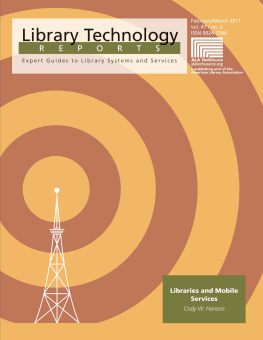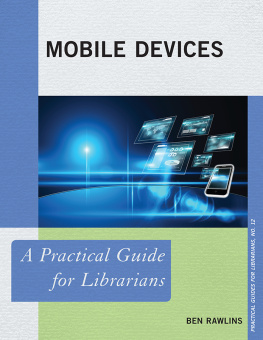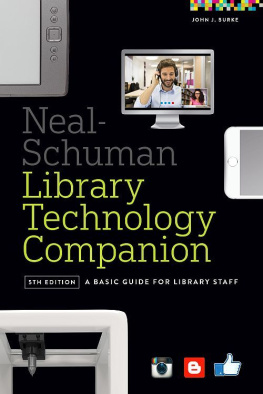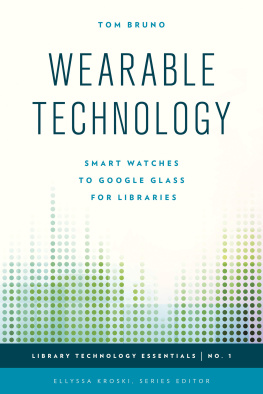For the past thirty-plus years, libraries and librarians have perceived themselves as subject to near-constant technological upheaval and information revolution, largely due to the rise of microcomputing, desktop computing, and Internet connectivity. Tech and industry prognosticators believe that the impact of mobile computing on our society and economy will dwarf these earlier innovations. Key indicators point to profound implications for delivery of information, access to services, shifts in the demographics of connected users, and broadband access business models. Libraries are uniquely positioned to advocate for the responsible evolution of mobile connectivity, and must move aggressively into provision of library services in the mobile realm.
This report examines the meteoric uptake of smartphones and mobile broadband, describing the trends transforming the way users are accessing information, and the implications for library policy and advocacy. Included is a detailed overview to bring you up to speed on the leading mobile operating systems, including Android, iOS, BlackBerry OS, WebOS, and Windows Phone 7, as well as a discussion of the hardware advancements that have helped the humble phone replace your Walkman, Game Boy, camera, and GPS. To help you decide how to proceed with mobile services in your library, the report includes basic strategies for making your library resources mobile friendly and for developing mobile websites and mobile applications.
Abstract
Mobile devices are ubiquitous in todays society, and theres no evidence that that is going to change. According to the Pew Internet and American Life Project, as of mid-2010, 82 percent of American adults own a mobile phone or a mobile computing device that works as a phone. This chapter of Libraries and Mobile Services sets the stage for the Report, explaining why it is crucial for librarians to understand mobile devices and provide services through them.
I ve always had a fascination with gadgets, especially small, portable gadgets. I recall debating with my parents about why a Casio Databank watch would be the perfect souvenir by which to remember a family vacation. And as befits someone who was firmly in the target demographic of the 1980s Transformers craze, multifunction gadgets hold a particular attraction.
The aforementioned predilections go only so far toward explaining how I found myself on a Saturday morning in the fall of 2003 waiting in my car for my local GameStop to open. That October week had seen the release of what I was convinced was a groundbreaking convergence gadget: the videogame- and MP3-playing, Web-browsing smartphone. I was waiting for the privilege of exchanging hard-won U.S. currency for a Nokia N-Gage ().
If youre familiar with the N-Gage, youre likely wiping away tears from derisive laughter. If not, allow me to explain why the N-Gage holds a special place in the hall of fame of misguided, poorly designed gadgets. Sure enough, it played videogames, which were sold on small memory cards. When the time came to swap cards so you could play another of the few games ever released for the device, you needed to power down the N-Gage, remove the back cover, and pop out the battery, underneath which was nestled the Tony Hawk or Red Faction card.
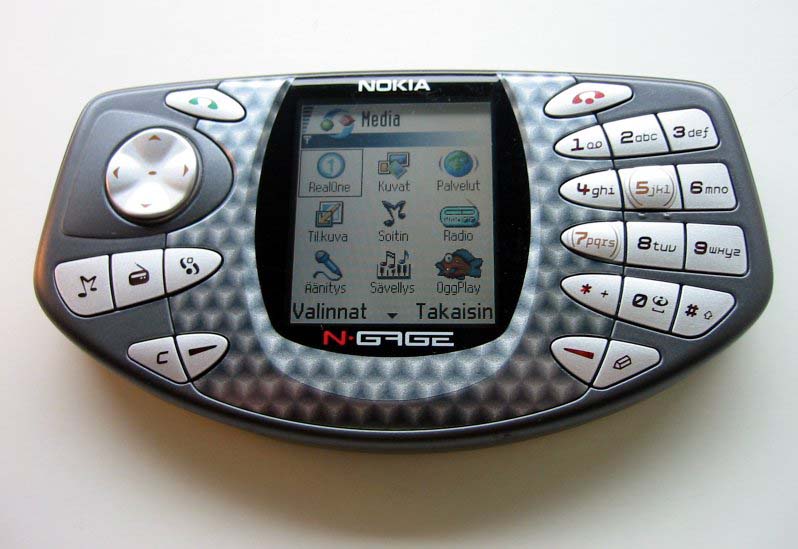
Figure 1
The Nokia N-Gage (photo credit: J-P Krn, Nokia N-Gage, http://commons.wikimedia.org/wiki/File: Nokia N-Gage.jpg, licensed under the Creative Commons Attribution-share Alike 3.0 Unported license, http://creativecommons.org/licenses/by-sa/3.0/dee.en).
It played MP3s all right, which you could load on a memory card. The only problem was that memory card occupied the same slot as the game card, so switching from the game Id been playing on the bus to the music I wanted to listen to on the walk home required balancing the cards, cover, battery, and phone on my lap before my stop.
The challenges of using the N-Gage as a gaming and multimedia device had nothing on the indignity of actually talking on the thing. In order to cram gaming controls and a number pad on the face of the N-Gage, the engineers at Nokia placed the speaker and microphone along the top edge. So, rather than holding the flat face of the device to my ear, as one might expect, I talked into the long, narrow edge, with the device protruding from my head like a fin. Imagine trying to talk into the bottom of a hard-shell taco. Now imagine my wife shaking her head as she bemoaned my giant crazy phone. My wife wasnt the only one who mocked the N-Gage. Sidetalking became quite the meme in 20032004, and jokesters shared photos of themselves online talking into the side of improbably large and unwieldy props (). Visit the Sidetalkin website for some galleries that immortalize the mockery of my giant crazy phone.

